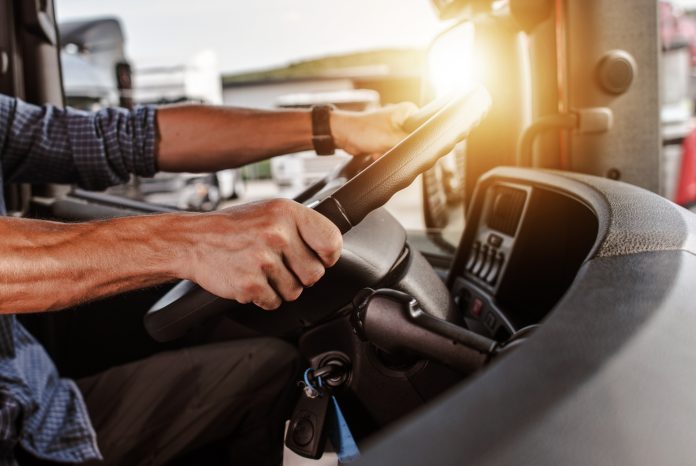Key Takeaways

- Understanding CDL Types: There are three main classes of Commercial Driver’s Licenses (CDLs)—Class A, Class B, and Class C—each tailored for different driving needs and vehicle types.
- Class A CDL: This license is required for operating combination vehicles exceeding a gross vehicle weight rating (GVWR) of 26,001 pounds. It is ideal for long-haul trucking and transporting heavy equipment.
- Class B CDL: Permitting the operation of single vehicles with a GVWR over 26,001 pounds, this license suits small businesses involved in local transports, such as buses and box trucks.
- Class C CDL: This license covers vehicles designed for transporting 16 or more passengers or hazardous materials, making it essential for shuttle services and specialized transport businesses.
- CDL Requirements: Obtaining a CDL involves age restrictions, residency proof, and passing both written and driving tests to ensure safety and compliance in operating commercial vehicles.
- Benefits of a CDL: Holding a CDL increases job opportunities, earning potential, and operational flexibility while ensuring safety compliance, making it a valuable asset for individuals and small business owners in the transportation sector.
If you’re exploring the world of Commercial Driver’s Licenses (CDLs), you might be surprised by the variety available. Each type of CDL serves a specific purpose and caters to different driving needs. Understanding these types can help you choose the right path for your career in trucking or transportation.
Overview of CDLs
Commercial Driver’s Licenses (CDLs) are crucial for operating large vehicles, especially if you’re running a small business that requires specialized transportation. Different types of CDLs cater to various driving needs, ensuring you choose the right one based on your business activities.
Class A CDL
Class A CDLs permit the operation of combination vehicles, such as tractor-trailers and trucks with a Gross Vehicle Weight Rating (GVWR) exceeding 26,001 pounds. This license is ideal for businesses involved in long-haul trucking or transporting heavy equipment.
Class B CDL
Class B CDLs allow drivers to operate single vehicles with a GVWR over 26,001 pounds, and they may tow vehicles up to 10,000 pounds. This license is suitable for small businesses that need to operate buses, box trucks, or dump trucks for local deliveries.
Class C CDL
Class C CDLs cover vehicles designed to transport 16 or more passengers or hazardous materials. This license supports small businesses that provide transportation services, like shuttle buses or vans for events.
Understanding these CDLs helps you make informed decisions for your small business. Evaluating your transportation needs will ensure compliance and optimize your operational efficiency.
Types of CDLs
Understanding the types of Commercial Driver’s Licenses (CDLs) is essential for small businesses that depend on transportation. Three distinct classes exist, each catering to specific needs in the trucking and transportation industries.
Class A CDLs
Class A CDLs permit you to operate any combination of vehicles with a gross combination weight rating (GVWR) of 26,001 pounds or more, as long as the towed vehicle weighs over 10,000 pounds. This category includes tractor-trailers, truck and trailer combinations, as well as flatbeds and tankers. For your small business, having a Class A license opens up opportunities to move larger loads effectively.
Class B CDLs
Class B CDLs authorize you to operate single vehicles with a GVWR of 26,001 pounds or more. This class includes straight trucks and large buses, such as those used for transporting passengers or goods. If your small business involves delivering heavy materials or provides transport services, a Class B license is necessary to comply with regulations and ensure safety.
Class C CDLs
Class C CDLs allow you to operate vehicles designed to transport 16 or more passengers, including the driver, or hazardous materials. Smaller businesses offering shuttle services or transporting goods that require special handling need this license. Class C CDLs ensure you meet safety standards while servicing diverse client needs effectively.
Requirements for Obtaining a CDL
Getting a Commercial Driver’s License (CDL) involves meeting specific requirements. Understanding these criteria is crucial for running a small business that relies on transporting goods or passengers.
Age and Residency
You must be at least 18 years old to apply for a CDL, permitting you to drive within state lines. To operate a commercial vehicle across state borders, you must be at least 21 years old. Additionally, you need to provide proof of residency in the state where you are applying. Documenting your residency through utility bills or lease agreements helps establish your eligibility.
Written and Driving Tests
You must pass both written and driving tests to obtain a CDL. The written test assesses your knowledge of road signs, regulations, and safety protocols. Study materials are available, often provided by state motor vehicle departments. After passing the written test, a behind-the-wheel driving test evaluates your ability to operate the vehicle safely. This hands-on test is essential for ensuring you can handle the specific types of vehicles relevant to your small business needs, whether that’s transporting cargo or passengers.
Benefits of Holding a CDL
Holding a Commercial Driver’s License (CDL) offers numerous advantages for individuals and small businesses.
- Increased Job Opportunities: Obtaining a CDL opens up a wider range of employment options. You can apply for various driving positions, including truck driver, bus driver, and specialized transport roles, enhancing your career prospects.
- Higher Earning Potential: With a CDL, you gain access to jobs that typically pay higher wages compared to non-CDL driving positions. Many truck drivers earn a median salary of $46,000 annually, with opportunities for overtime and long-haul routes often leading to increased earnings.
- Flexibility in Transportation: Possessing a CDL grants you the freedom to choose from multiple types of vehicles, whether for delivering goods or transporting passengers. This flexibility allows you to adapt your business model to meet changing demands, ensuring that you can cater to various customer needs.
- Compliance and Safety: CDLs ensure that you receive training in safety regulations and operate vehicles within the legal limits. This focus on safety not only protects you but also enhances the reputation of your small business, fostering trust with customers.
- Ability to Meet Business Needs: For small businesses, holding a CDL allows you to manage your transportation needs in-house. Instead of relying on third-party services, you can oversee logistics and cut costs, improving overall operational efficiency.
- Endorsements for Specialized Vehicles: With a CDL, you can obtain endorsements that allow you to transport specific types of loads, such as hazardous materials or large passenger vehicles. This specialization can differentiate your small business in a competitive market.
Investing in a CDL not only supports your career but also strengthens the foundation of your small business by expanding service capabilities and ensuring compliance.
Conclusion
Understanding the different types of CDLs is essential for anyone looking to advance their career in transportation. Each class serves a unique purpose and caters to specific business needs. Whether you’re considering Class A for heavy hauls or Class C for passenger transport, knowing the distinctions can help you make informed choices.
By obtaining the right CDL, you not only enhance your job prospects but also ensure compliance with safety regulations. This investment can lead to improved operational efficiency for your business and greater trust from your customers. Embrace the opportunities that come with a CDL and watch your career or business thrive in the competitive transportation landscape.
Frequently Asked Questions
What is a Commercial Driver’s License (CDL)?
A Commercial Driver’s License (CDL) is a special license required to operate large vehicles like trucks and buses. It ensures that drivers understand the rules and safety protocols necessary for handling these vehicles, which is essential for those working in trucking or transportation.
What are the different types of CDLs?
There are three main types of CDLs: Class A, Class B, and Class C. Class A is for combination vehicles, Class B is for single vehicles over 26,001 pounds, and Class C is for transporting 16 or more passengers or hazardous materials.
What are the requirements to obtain a CDL?
To obtain a CDL, applicants must be at least 18 years old for intrastate driving or 21 for interstate driving. They also need to provide proof of residency and pass both a written test on regulations and a driving test to demonstrate their vehicle operation skills.
Why is it important to have a CDL for small businesses?
Having a CDL allows small businesses to meet legal transportation requirements, improve operational efficiency, and provide specialized services. It enhances safety compliance, increases job opportunities, and can lead to higher earnings.
What benefits does a CDL provide?
A CDL offers several benefits, including access to more job opportunities, higher wages, and the ability to operate various vehicle types. It also allows businesses to manage transportation needs in-house, leading to cost savings and improved customer trust.
Image Via Envato: duallogic



